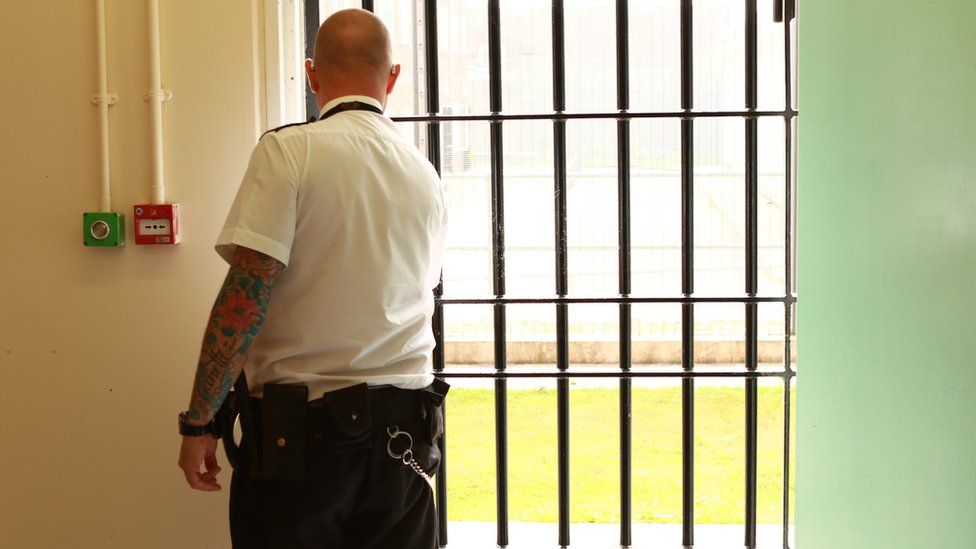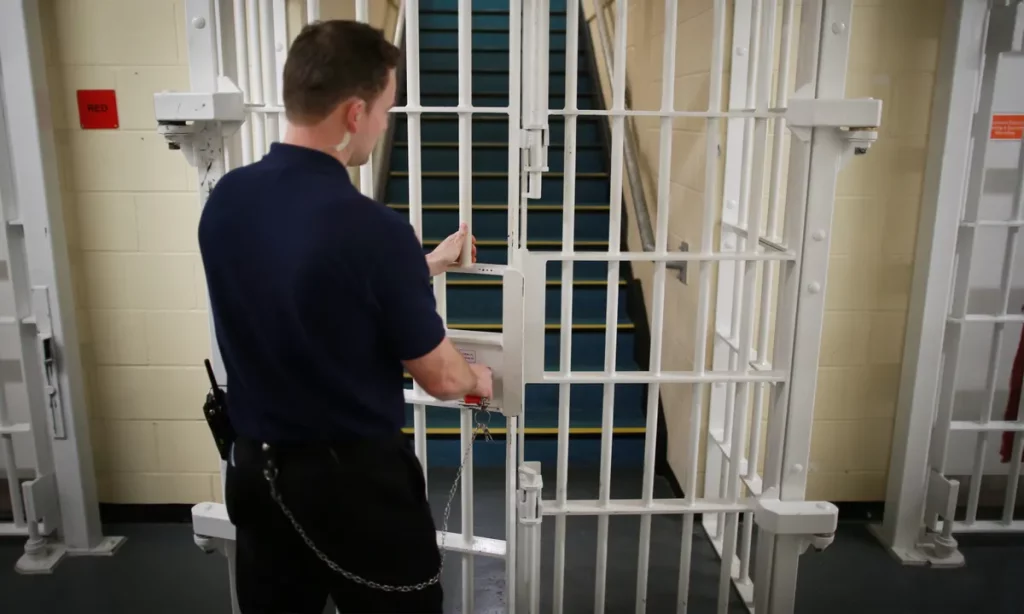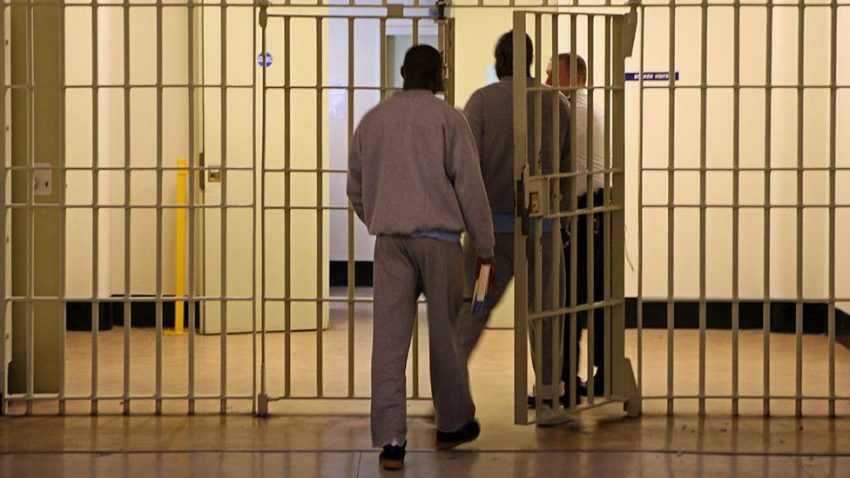In the UK, prisoners are usually set free in the morning or early afternoon. This schedule helps them transition back into society smoothly. It provides time to access support services, sort out transportation, and address immediate needs.
However, the exact release time can vary from one prison to another. Some choose to release prisoners early in the morning, while others prefer later in the day.
For those on electronic monitoring or temporary release programs, schedules might be different. This flexible approach aims to meet the unique needs of each individual, with the main goal of ensuring their successful reintegration and reducing potential challenges during this crucial period after release.
How Does the UK Prison System Works?

The United Kingdom’s prison system is a complex and diversified network of institutions that play a pivotal role in maintaining law and order.
The UK’s prison system is not one-size-fits-all; it encompasses a variety of facilities to cater to different categories of inmates. Each type of institution is designated for specific purposes and classifications of prisoners. Here’s a closer look at these facilities
Category A Prisons
These high-security institutions house the most dangerous and high-risk offenders, often individuals convicted of serious crimes.
Category B Prisons
While not maximum security, Category B prisons provide strict control for inmates who may pose security challenges but are not classified as high-risk.
Category C Prisons
These institutions are for prisoners who cannot yet be entrusted with open conditions but do not present immediate threats. They focus on preparing inmates for potential reintegration.
Category D Prisons (Open Prisons)
In contrast to higher-security facilities, Category D prisons, also known as open prisons, accommodate low-risk offenders and focus on their rehabilitation and reintegration into society.
Young Offender Institutions
Specifically designed for offenders under the age of 18, these institutions cater to the unique needs and challenges faced by young inmates.
Women’s Prisons
Designed exclusively for female inmates, women’s prisons address the particular issues and rehabilitation requirements of women offenders.
What Are the Key Steps in the Prisoner Release Process in the UK?
The prisoner release process in the United Kingdom involves several key steps, each carefully orchestrated to ensure the safety of the community and the successful reintegration of the individual into society.
Pre-Release Preparation
In the weeks leading up to release, inmates undergo preparation. During this phase, assessments are conducted to determine an individual’s specific needs and the potential risks they might face upon release. A personalized release plan is developed, addressing factors like housing, employment, medical and mental health support, and social services.
Documentation and Personal Belongings
As inmates prepare to leave prison, they are provided with their personal belongings and relevant documentation, including identification materials. This step is essential in ensuring that former inmates can seamlessly reintegrate into society without unnecessary hurdles.
Reintegration Support
The provision of support services is a pivotal aspect of the release process. Inmates are connected with agencies and organizations that assist in finding suitable housing, employment opportunities, and accessing essential services like medical care or mental health support.
Transportation Arrangements
Practical preparations are made for transportation to the inmate’s intended destination. Whether it’s returning to their home community or accessing a halfway house, ensuring transportation options is essential for their successful reintegration.
Release Timing
The precise timing of an inmate’s release can vary and is influenced by several factors, including the individual’s specific circumstances, the procedures of the prison in which they are incarcerated, and the need to ensure a smooth transition back into society. The flexible approach to release timing aims to meet the unique requirements of each individual, considering their safety, readiness, and logistical aspects.
What Are The Legal Aspects Of Prisoner Release?
The release of prisoners in the United Kingdom is governed by a robust legal framework that ensures the process is conducted in a fair and lawful manner.
Sentencing and Release: The legal framework in the UK includes sentencing guidelines that stipulate the length of a prison term based on the nature and severity of the crime committed. It also outlines the criteria for release on parole or probation. The law mandates that certain offenders serve a specific portion of their sentence before becoming eligible for release.
Parole Board Decisions: The Parole Board plays a critical role in evaluating whether an inmate should be released before the completion of their sentence. Decisions regarding parole are made following careful consideration of factors such as the inmate’s behavior, rehabilitation progress, and risk to society.
Release on License: In many cases, inmates are released on license, which means they must adhere to certain conditions, such as reporting to a probation officer, refraining from specific activities, or attending rehabilitation programs. Failure to comply with these conditions can result in re-incarceration.
Human Rights Considerations: The legal framework also takes into account human rights considerations. Inmates have the right to be treated with dignity and respect, and their release must align with these principles. The law ensures that individuals are not held beyond their legal detention period.
Public Protection: The legal framework prioritizes public safety. Decisions regarding an inmate’s release must consider the potential risk they may pose to society. This includes assessments of an inmate’s likelihood to reoffend and their readiness for reintegration.
How Do Rehabilitation Programs Transform Prisoners’ Lives?
In the UK, prisoner rehabilitation is supported by a range of programs and services, including
Education
Prisoners have access to educational programs that can improve their literacy, numeracy, and vocational skills. These programs aim to enhance their employability upon release.
Vocational Training
Vocational training equips individuals with practical skills that can lead to employment opportunities. Training in trades like plumbing, carpentry, and culinary arts can provide prisoners with a pathway to a career.
Therapeutic Interventions
Counseling and therapy services are available to address mental health issues, substance abuse problems, and other underlying factors contributing to criminal behavior.
Employment Support
Preparing prisoners for the job market is a crucial aspect of rehabilitation. Support in creating CVs, interview skills, and job placement services can help individuals find gainful employment upon release.
Community Programs
Prisoners nearing release may participate in programs that allow them to gradually reintegrate into the community, easing the transition from incarceration to freedom.
What Are the Key Challenges in Prisoner Rehabilitation?

Prisoner rehabilitation is a multifaceted process that seeks to prepare individuals for successful reintegration into society after serving their sentences. However, several key challenges can impede this journey.
Resource Limitations: One major challenge in prisoner rehabilitation is resource limitations. Prisons often face constraints on funding and overcrowding, impacting the availability and quality of rehabilitation programs.
High Recidivism Rates: Despite rehabilitation efforts, high recidivism rates persist. The complex nature of criminal behavior and the challenges of reintegration make it difficult to break the cycle of reoffending.
Societal Stigma and Discrimination: Ex-prisoners often face stigma and discrimination in society, making it challenging to secure employment and stable housing. These barriers can hinder their reintegration.
Mental Health and Addiction: Addressing mental health issues and addiction is crucial for successful rehabilitation. However, resources and access to treatment are often limited, making it challenging to provide the necessary support.
FAQ
Do prisoners get released on Fridays UK?
Yes, prisoners in the UK can be released on any day of the week, including Fridays. The timing depends on various factors, such as the individual’s specific case and the administrative processes.
What time do UK prisoners wake up?
The wake-up time for UK prisoners can vary by prison and its schedule, but it’s typically in the early morning, around 6:30 AM to 7:00 AM.
Why does it take so long to be released from jail?
The release process from jail involves several administrative and security procedures, including paperwork verification and transportation arrangements. These steps are in place to ensure a smooth and secure transition, and they can take time to complete.
How much time do prisoners get outside UK?
The amount of time prisoners get outside the UK depends on their individual cases, including parole, extradition, or deportation processes.
Do UK prisoners share rooms?
In the UK, most prisoners do not share rooms. They typically have individual cells. However, shared accommodations may exist in some cases.
What is the biggest nationality in UK prisons?
The composition of nationalities in UK prisons can vary, but statistics often indicate that individuals of British nationality make up a significant portion of the prison population.
How good are prisons in the UK?
Prisons in the UK aim to meet certain standards for the humane treatment of inmates and rehabilitation. Their quality can vary, but there are efforts to improve conditions and services.
What is the famous UK jail?
One of the most famous jails in the UK is the Tower of London. However, it’s no longer a functioning prison and is now a historic site. Modern-day famous prisons include HMP Belmarsh and HMP Alcatraz.
Final words
On the whole, the time of day when prisoners are released in the UK can vary, but it often happens in the morning. This carefully managed process is designed to help individuals reintegrate into society smoothly. It involves several administrative steps and the verification of essential paperwork. While the challenges of post-release life exist, there are support systems in place to assist ex-prisoners. Understanding these aspects of the release process is vital for building a just and inclusive society.

